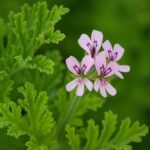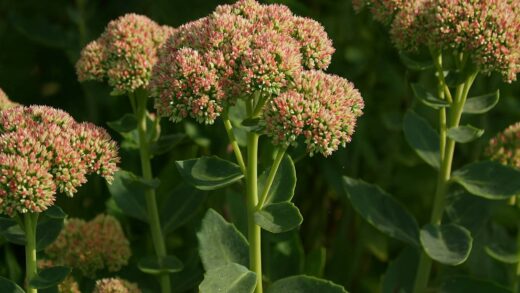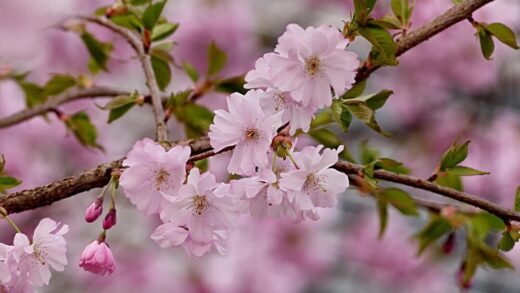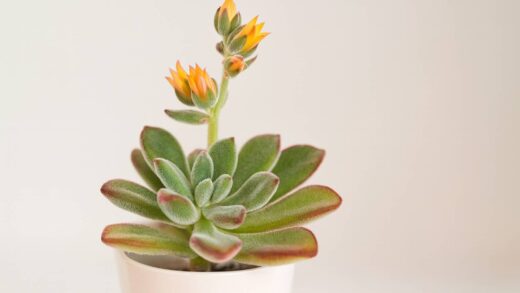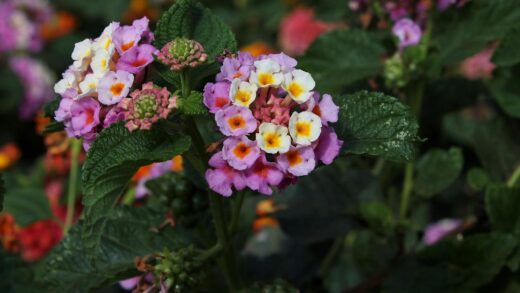Despite their delicate appearance, cosmos are remarkably robust and generally untroubled by a wide range of diseases and pests. Their resilience is one of their most appealing qualities, making them a low-stress addition to any garden. However, like any plant, they are not entirely immune to problems, especially when grown in less-than-ideal conditions. Understanding the potential issues that can arise and how to prevent them is key to maintaining healthy, vibrant plants. Most problems are directly related to environmental factors, such as poor air circulation or overly wet soil, which can be managed with proper planting and care techniques.
The majority of diseases that can affect cosmos are fungal in nature, thriving in damp, humid conditions. Powdery mildew and various forms of rot are the most common culprits. These issues are almost always a secondary problem resulting from incorrect cultural practices. By providing your cosmos with their preferred growing conditions—full sun, well-drained soil, and good air circulation—you create an environment that is inhospitable to these fungal pathogens. Prevention, therefore, is the most effective form of disease management.
When it comes to pests, cosmos are not a primary target for most garden insects, but a few can occasionally become a nuisance. Aphids are the most likely pest you will encounter, congregating on new growth and flower buds. Other, less common pests might include thrips or Japanese beetles in certain regions. Fortunately, healthy cosmos plants are quite tolerant of minor pest infestations, and populations are often kept in check by natural predators in a balanced garden ecosystem.
The key to dealing with both diseases and pests in cosmos is observation and early intervention. Regularly inspecting your plants allows you to catch problems before they become severe. In most cases, simple, non-chemical solutions are all that is needed to resolve the issue. By focusing on creating a healthy growing environment and employing gentle control methods when necessary, you can easily manage any potential threats and ensure your cosmos remain a beautiful and trouble-free feature in your garden all season long.
Common fungal diseases affecting cosmos
Powdery mildew is perhaps the most common fungal disease you might see on cosmos, particularly in late summer and autumn when warm days are followed by cool, damp nights. It appears as a conspicuous white or grayish powdery coating on the surfaces of leaves, stems, and sometimes flowers. While it looks unsightly, it is often more of a cosmetic issue than a fatal one for the plant. However, a severe infection can interfere with photosynthesis, stressing the plant and potentially reducing its vigor and flowering capacity.
More articles on this topic
The primary cause of powdery mildew is a combination of high humidity and poor air circulation. To prevent it, ensure you plant your cosmos with adequate spacing between them, typically 30-50 centimeters apart, depending on the variety. This allows air to move freely around the plants, which helps to keep the foliage dry. Watering at the base of the plant in the morning, rather than overhead in the evening, also plays a crucial role in prevention, as it allows the soil surface to dry during the day and keeps the leaves from being wet overnight.
If you do notice the beginnings of a powdery mildew infection, you can often manage it with simple remedies. For minor cases, you can remove the affected leaves and dispose of them to prevent the spores from spreading. For more widespread infections, a spray made from one part milk to nine parts water can be surprisingly effective, as the proteins in the milk appear to have an antiseptic effect on the fungus. Horticultural oils or neem oil sprays are also effective organic fungicides that can be used to control the spread of the disease.
Another fungal issue, though less common, is botrytis blight, also known as gray mold. This disease typically affects the flowers and buds, causing them to turn brown, rot, and become covered in a fuzzy gray fungal growth. Like powdery mildew, botrytis blight thrives in cool, damp conditions. The best prevention is to ensure good air circulation and to deadhead spent flowers promptly, as the decaying petals provide an ideal entry point for the fungus. Removing and destroying any infected plant parts immediately is crucial to stop its spread.
Identifying and managing bacterial issues
Bacterial diseases are significantly less common in cosmos than fungal ones, but one that can occasionally appear is bacterial wilt. This disease is caused by soil-borne bacteria that enter the plant’s vascular system through its roots, often via a wound. Once inside, the bacteria multiply and clog the xylem, which is the tissue responsible for transporting water from the roots to the rest of the plant. This blockage causes the plant to wilt and die, even when the soil is moist.
More articles on this topic
The symptoms of bacterial wilt can be sudden and dramatic. An entire stem or the whole plant may wilt rapidly, often starting on one side. The leaves may turn yellow and then brown, but they typically remain attached to the stem. If you cut a cross-section of an infected stem, you may see a milky, slimy ooze, which is a tell-tale sign of a bacterial infection. Unfortunately, there is no chemical cure for bacterial wilt once a plant is infected.
Management of bacterial wilt is focused entirely on prevention and sanitation. The bacteria can persist in the soil for several years, so crop rotation is essential. Avoid planting cosmos or other susceptible species (like tomatoes or zinnias) in the same spot year after year if you have had a problem with this disease. The bacteria often enter plants through wounds created by garden tools, insects, or nematodes, so be careful not to damage the stems or roots during cultivation.
If you identify a plant with bacterial wilt, it should be removed and destroyed immediately to prevent the bacteria from spreading further in the soil. Do not place infected plants in your compost pile, as this can perpetuate the problem. Improving soil drainage can also help, as the bacteria are more active in wet conditions. Solarizing the soil by covering the affected bed with clear plastic during the hottest part of the summer can also help to reduce the bacterial population in the soil for future plantings.
Common sap-sucking pests
Aphids are the most frequent pest visitors to cosmos plants. These small, pear-shaped insects come in various colors, including green, black, and yellow, and they typically cluster on the tender new growth at the tips of the stems and on the undersides of leaves and flower buds. They feed by piercing the plant tissue and sucking out the sap, which can cause new growth to become distorted, curled, or stunted. While a small number of aphids will do little harm, a large infestation can weaken the plant and reduce its flowering.
One of the secondary problems associated with aphids is the sticky substance they excrete, known as honeydew. This sugary liquid can coat the leaves and stems, and it often leads to the growth of a black, sooty mold, which, while not directly harmful to the plant, is unsightly and can interfere with photosynthesis. Honeydew also attracts ants, which will “farm” the aphids, protecting them from predators in exchange for a continuous supply of this food source. The presence of ants on your cosmos is often a good indicator of an aphid infestation.
Managing aphids on cosmos is usually quite simple and does not require harsh chemicals. For a minor infestation, a strong jet of water from a hose is often enough to dislodge them from the plant. This may need to be repeated every few days to keep the population under control. You can also manually wipe them off with your fingers or a cloth. Encouraging natural predators, such as ladybugs, lacewings, and hoverflies, is the best long-term solution. Planting a diversity of flowers in your garden will help to attract these beneficial insects.
If the infestation is more severe, an application of insecticidal soap or neem oil can be very effective. These products work by smothering the soft-bodied insects and must be sprayed directly onto the aphids to be effective. Be sure to coat all surfaces of the plant, including the undersides of the leaves. It is best to apply these treatments in the early morning or evening to avoid spraying in direct sun, which can cause the leaves to burn, and to minimize harm to foraging pollinators like bees.
Chewing insects and other garden pests
While less common than aphids, certain chewing insects can sometimes feed on cosmos. Japanese beetles, with their metallic green and copper bodies, can be a significant pest in some regions. They feed on both the foliage and the flowers, skeletonizing the leaves by eating the tissue between the veins and chewing holes in the petals. Their feeding can quickly make a plant look tattered and unhealthy. The best way to control Japanese beetles on a small scale is to hand-pick them off the plants in the early morning when they are sluggish and drop them into a bucket of soapy water.
Other generalist pests, such as slugs and snails, might occasionally trouble young cosmos seedlings. These mollusks feed at night, chewing irregular holes in the tender leaves and stems of the young plants. Once the plants grow larger and their stems become tougher, they are usually less susceptible to slug damage. You can protect seedlings by using slug baits (iron phosphate-based baits are a safer, organic option), copper tape around pots, or by creating a barrier of crushed eggshells or diatomaceous earth around the base of the plants.
Grasshoppers can also be occasional pests, chewing on the leaves and flowers of cosmos. In most garden settings, the damage they cause is minimal and can be tolerated. In years when grasshopper populations are particularly high, they can cause more significant damage. Protecting plants with a lightweight floating row cover can be an effective barrier method, though this may not be practical for the tall, airy structure of mature cosmos plants.
For the most part, healthy and vigorous cosmos plants are able to withstand minor damage from chewing insects without a significant impact on their overall performance. The key is to maintain plant health through good cultural practices. A strong, healthy plant is much better equipped to tolerate and recover from a small amount of pest damage than a plant that is already stressed by poor growing conditions. A diverse garden ecosystem that supports predators of these pests is also a crucial part of a natural and effective management strategy.
Integrated pest management (IPM) strategies
Integrated Pest Management (IPM) is a holistic and environmentally sensitive approach to managing pests and diseases that is perfectly suited for growing cosmos. The core principle of IPM is to use a combination of strategies to keep pest populations below a level where they cause significant damage, rather than aiming for complete eradication. The first and most important strategy is cultural control, which involves creating a healthy growing environment. For cosmos, this means providing full sun, well-drained soil, and proper spacing to promote air circulation, which prevents many problems from starting.
The second level of IPM is mechanical and physical control. This includes actions like hand-picking pests such as Japanese beetles, spraying aphids off with a jet of water, or using barriers like row covers to protect young plants. It also involves the simple but crucial practice of sanitation: removing and destroying diseased plant material to prevent the spread of pathogens. Regularly deadheading spent blooms is another form of mechanical control that removes potential sites for botrytis blight to take hold.
The third strategy is biological control, which involves using other living organisms to manage pests. This is a cornerstone of organic gardening. You can encourage a healthy population of natural predators like ladybugs, lacewings, and predatory wasps by planting a wide variety of flowering plants that provide them with nectar and pollen. Avoiding the use of broad-spectrum chemical pesticides is essential, as these will kill beneficial insects just as effectively as they kill pests, disrupting the natural balance of your garden.
The final and last resort in an IPM program is the use of chemical controls, specifically targeted, low-impact pesticides. For cosmos, this would include options like insecticidal soap, horticultural oil, or neem oil. These products are generally less harmful to beneficial insects and the wider environment than synthetic, broad-spectrum pesticides. They should only be used when a pest problem has become severe and cannot be managed by other means. By following the IPM pyramid and starting with the least invasive methods first, you can maintain healthy cosmos with minimal chemical intervention.








